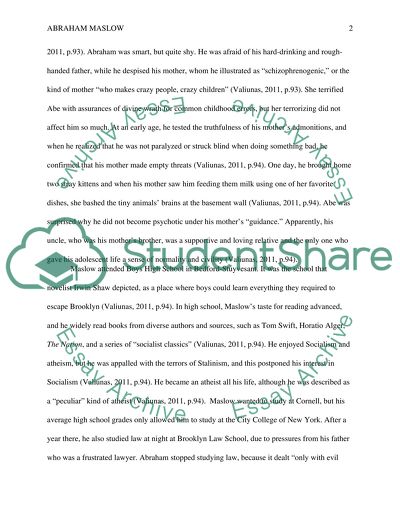Cite this document
(“Abraham Maslow: His Life and Theory on Human Development Essay”, n.d.)
Retrieved from https://studentshare.org/psychology/1447926-abraham-maslow
Retrieved from https://studentshare.org/psychology/1447926-abraham-maslow
(Abraham Maslow: His Life and Theory on Human Development Essay)
https://studentshare.org/psychology/1447926-abraham-maslow.
https://studentshare.org/psychology/1447926-abraham-maslow.
“Abraham Maslow: His Life and Theory on Human Development Essay”, n.d. https://studentshare.org/psychology/1447926-abraham-maslow.


